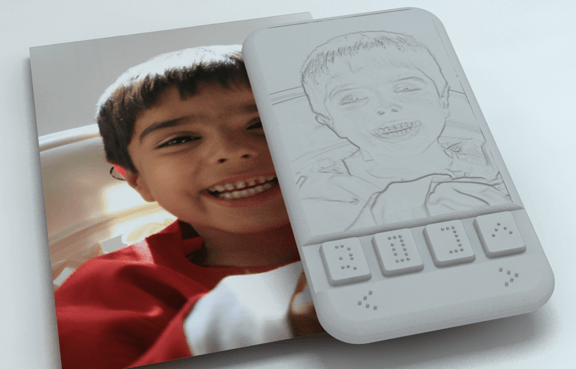In the sacred Hindu epic Mahabharata, a character called Sanjaya is entrusted with the duty of narrating the stories unfolding on the battleground to his blind king, Lord Dhritraashtra. It is said he was blessed with an ability to see events at a distance. So, in essence, the king had found himself an alternate pair of eyes who envisioned and reported live news events.
One might think such magical stories don’t come true in our real lives. However in the world where technology and culture are a byproduct of each other, there is indeed one visionary with a revolutionary design goal in mind to affect the lives of the visually-deprived. Sumit Dagar, an interaction designer from the National Institute of Design in India, was awarded a Rolex Award for Enterprise for his work on the concept of a braille phone. This smartphone for the blind is based on haptic rather than visual or auditory feedback.
Why haptics one might wonder? Given that the braille phone will be released in India, and Dagar plans to make it affordable to the poorer sections of society, he realises that not every user will be able to understand an English-language interface. On top of this, it would be extremely laborious to come up an auditory-feedback phone for each of India's 27 languages, let alone creating a different version for every world language. So, Dagar's solution is to transform the data received into tangible patterns which the user can touch and interpret. An example, for instance, would be a real-time image of a friend that can be felt on the surface of the phone using a technology called ‘height-mapping’.
This technology is made possible by SMA – Shape-Memory Alloys a.k.a. smart metals, which work on the principle of pseudoelasticity/superelasticity. For every image received on the phone, a pixelated set of pins rise up and fall back to illustrate the imagery. For a dynamic electronic transaction such as video-calling, the blind can now experience changes in the surface of their touchphone to feel the smiles of their near-and-dear ones. If all goes as planned , the braille phone will find its way to the market by the end of this year. "What You Feel Is What You Get" might just be the new norm for the visually-challenged to connect with the world.
Image via Sumit Dagar Blog

Share your thoughts and join the technology debate!
Be the first to comment